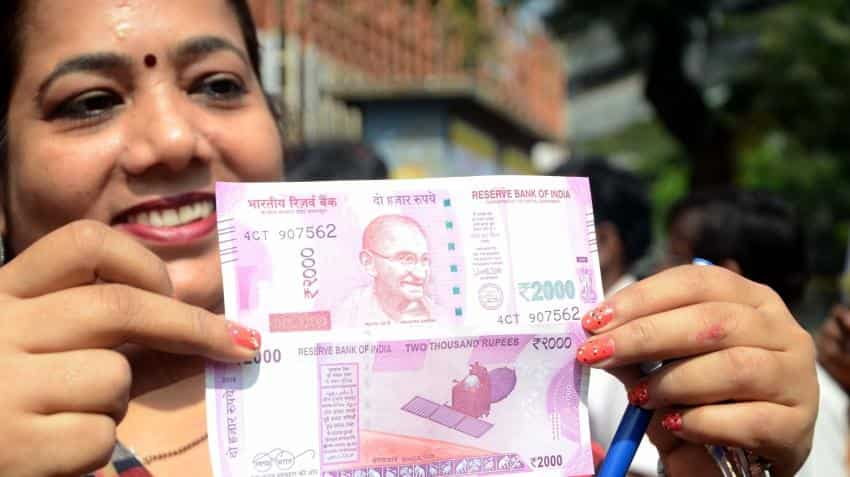RBI's SLR cut may help bring down your EMIs
Any reduction in SLR gives more room to bankers for trimming interest rates. This would mean, if you are borrower your EMIs may come down further.

The Reserve Bank of India (RBI) while maintaining a 'status quo' in its second bi-monthly monetary policy on Wednesday decided to reduce SLR by a 50 basis points.
RBI said, “As per the existing road map, commercial banks have to reach the minimum liquidity coverage ratio (LCR) of 100% on January 1, 2019. “
It added, “In order to give greater flexibility to banks to comply with the LCR requirement in an efficient manner, it has been decided to reduce the SLR from 20.5% of Net Demand and Time Liabilities (NDTL) to 20% of the same.”
Ashwin Sheth, CMD, Sheth Corp on RBI policy commented, "Urjit Patel keeping the repo rate unchanged at 6.25% was an expected move, as RBI was expecting clarity on monsoon and impact of GST rollout."
He further added, "Although SLR was cut by 50 basis points to 20%, it will certainly instill more liquidity into the banking system which will indirectly help banks to lend more money."
What are Statutory Liquidity Ratio (SLR)?
Apart from Cash Reserve Ratio (CRR), banks are needed to hold a certain percentage of NDTL in forms of securities like government bonds, gold, cash, etc.
This certain portion is called as SLR – which is done to ensure banks have enough of funds available to pay back to its customers who may have any immediate requirement to encash their deposits.
In case of lower SLR, banks have higher ability to give credit which means further room for a cut in marginal cost fund based of lending rates (MCLR) making people to opt for more loans for various purpose.
Bank credit growth has been at a single-digit growth in last fiscal due to banks rising non-performing assets and lack of investment.
RBI stated, surplus liquidity in banking system post-demonetisation was drained by Rs 1.5 lakh crore between April – May 2017, but massive spending by the government re-injected liquidity into the system, raising the daily average overall surplus liquidity in banking system to Rs 4.2 lakh crore in April and Rs 3.5 lakh crore in May 2017.
As per analysts there is still more room for MCLR cut. ICRA in its report stated that declining interest rate will prompt existing bank borrowers to shift from base rate system to new MCLR mechanism as will help reduce repayment cost.
Jefferies said in its recent report that, “A 60-90 basis points reduction in one-year bank funding rate could shift the marginal volume from a non-bank to a bank.”
Shifting from base rate to new MCLR rate means your EMIs will come down.
During January – March 2017 period, the base rate of banks came down from a range of 9.3 – 9.7% to 9.1% - 9.6% while the MCLR reduced from 8.95% to 7.75 – 8.20%.
RBI kept policy repo rate unchanged at 6.25% in July policy.
Get Latest Business News, Stock Market Updates and Videos; Check your tax outgo through Income Tax Calculator and save money through our Personal Finance coverage. Check Business Breaking News Live on Zee Business Twitter and Facebook. Subscribe on YouTube.
RECOMMENDED STORIES

Power of Compounding: How can you create Rs 5 crore, 6 crore, 7 crore corpuses if your monthly salary is Rs 20,000?

Rs 1,000 Monthly SIP for 40 Years vs Rs 10,000 Monthly SIP for 20 Years: Which can give you higher corpus in long term? Calculations inside

Top 7 ETFs With Highest Returns in 1 Year: No. 1 ETF has turned Rs 8,78,787 investment into Rs 13,95,091; know how others have fared

Latest SBI Senior Citizen FD Rates: How much senior citizens can get on investments of Rs 5,55,555, Rs 7,77,777, and Rs 9,99,999 in Amrit Vrishti, 1-, 3-, and 5-year FDs

after bumper 2024 rs 2 lakh crore worth ipos expected in 2025 primary market nsdl avanse financial ecom express sebi approval
06:29 PM IST








 Banking frauds rise in H1FY25, amount involved jumps 8-time: RBI report
Banking frauds rise in H1FY25, amount involved jumps 8-time: RBI report Electricity distribution companies continue to remain a burden on state finances: RBI
Electricity distribution companies continue to remain a burden on state finances: RBI Rupee hits all-time low; RBI intervenes to curb further losses
Rupee hits all-time low; RBI intervenes to curb further losses Rupee slumps to record closing low of 84.88 vs dollar
Rupee slumps to record closing low of 84.88 vs dollar Bank stocks rally up to 2% after RBI cuts CRR to 4%
Bank stocks rally up to 2% after RBI cuts CRR to 4%